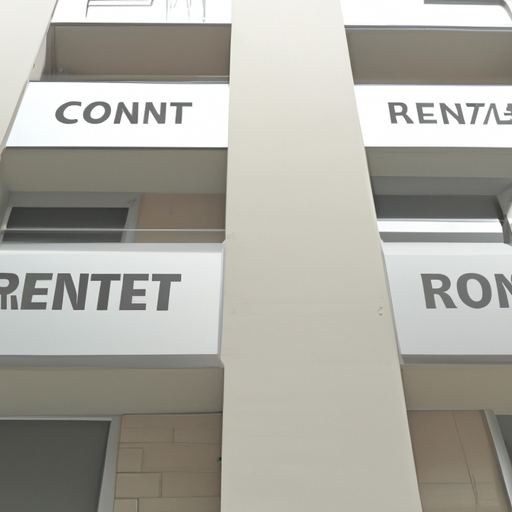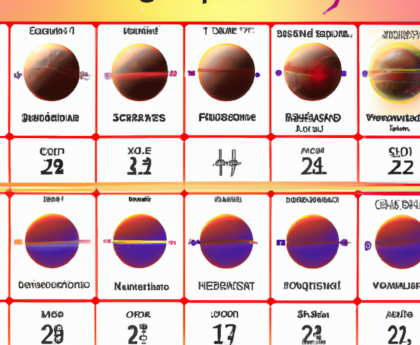“Rental crisis of fast surging rents. From the History of Australia’s Rent Controls – and What It Was Like we see if rent controls can be reintroduced now!”
Introduction
Rent controls have been a contentious issue in Australia for many years. In the past, rent controls were used to regulate the amount of rent that landlords could charge tenants. This was done to protect tenants from being charged excessive amounts of rent and to ensure that landlords were not taking advantage of their tenants. Rent controls were abolished in most states in the late 1980s, but some states still have rent control laws in place. In this article, we will look at the history of rent controls in Australia, what they looked like, and why they were abolished and we will see if Govt. can introduce rent controls to address the present rental crisis.
Exploring the Reasons Behind the Abolition of Rent Controls in Australia
Rent controls, which are regulations that limit the amount of rent that can be charged for a property, have been abolished in Australia. This decision has been met with both criticism and support from various stakeholders. In this article, we will explore the reasons behind the abolition of rent controls in Australia.
The primary reason for the abolition of rent controls in Australia is the belief that they are ineffective in achieving their intended purpose. Rent controls are intended to make housing more affordable for tenants, but research has shown that they can actually have the opposite effect. This is because rent controls can lead to a decrease in the supply of rental properties, as landlords are less likely to invest in rental properties if they cannot charge market rates for rent. This decrease in supply can lead to an increase in rental prices, which defeats the purpose of rent controls.
Another reason for the abolition of rent controls in Australia is the belief that they can lead to a decrease in the quality of rental properties. This is because landlords may be less likely to invest in maintaining and improving their properties if they cannot charge market rates for rent. This can lead to a decrease in the quality of rental properties, which can have a negative impact on tenants.
Finally, rent controls can also lead to an increase in the cost of housing for landlords. This is because landlords may be unable to cover their costs if they cannot charge market rates for rent. This can lead to an increase in the cost of housing for landlords, which can have a negative impact on the housing market.
In conclusion, rent controls have been abolished in Australia due to the belief that they are ineffective in achieving their intended purpose, can lead to a decrease in the quality of rental properties, and can increase the cost of housing for landlords.
Comparing Rent Controls in Australia to Other Countries
Rent control is a policy that limits the amount of rent that can be charged for a rental property. It is a popular policy in many countries, including Australia, and is used to protect tenants from excessive rent increases. In this article, we will compare the rent control policies of Australia to those of other countries.
In Australia, rent control is regulated by state and territory governments. The regulations vary from state to state, but generally, landlords are not allowed to increase the rent more than once a year, and the increase must be in line with the Consumer Price Index (CPI). In addition, landlords must give tenants at least 60 days’ notice before increasing the rent.
In the United States, rent control is regulated by local governments. In some cities, such as New York and San Francisco, rent control is in place to protect tenants from excessive rent increases. In other cities, such as Chicago and Los Angeles, rent control is not in place, and landlords are free to increase the rent as they see fit.
In the United Kingdom, rent control is regulated by the government. Landlords are not allowed to increase the rent more than once a year, and the increase must be in line with the Consumer Price Index (CPI). In addition, landlords must give tenants at least 90 days’ notice before increasing the rent.
In Canada, rent control is regulated by provincial governments. The regulations vary from province to province, but generally, landlords are not allowed to increase the rent more than once a year, and the increase must be in line with the Consumer Price Index (CPI). In addition, landlords must give tenants at least 60 days’ notice before increasing the rent.
Overall, Australia’s rent control policies are similar to those of other countries. The main difference is that in Australia, the regulations are set by state and territory governments, while in other countries, the regulations are set by local or national governments.
Investigating the Different Types of Rent Controls Used in Australia
Rent controls are a form of government regulation that limit the amount of rent that can be charged for a rental property. In Australia, rent controls are used to protect tenants from excessive rent increases and to ensure that rental properties remain affordable. This article will explore the different types of rent controls used in Australia.
The most common type of rent control used in Australia is rent stabilization. This type of rent control limits the amount of rent that can be charged for a rental property and prevents landlords from increasing the rent beyond a certain amount. Rent stabilization also requires landlords to provide tenants with a certain level of services and amenities.
Another type of rent control used in Australia is rent capping. This type of rent control limits the amount of rent that can be charged for a rental property to a certain percentage of the market rate. This type of rent control is designed to ensure that rental properties remain affordable for tenants.
In addition to rent stabilization and rent capping, some Australian states also use rent control laws to protect tenants from unfair evictions. These laws require landlords to provide tenants with a certain amount of notice before evicting them and to provide a valid reason for the eviction.
Finally, some Australian states also use rent control laws to protect tenants from discrimination. These laws prohibit landlords from discriminating against tenants based on their race, gender, religion, or other protected characteristics.
In conclusion, there are several different types of rent controls used in Australia. These rent controls are designed to protect tenants from excessive rent increases, unfair evictions, and discrimination. It is important for tenants to understand their rights and the different types of rent controls used in their state or territory.
Analyzing the Pros and Cons of Rent Controls in Australia
Rent controls are a form of government regulation that limit the amount of rent that can be charged for a rental property. In Australia, rent controls are a contentious issue, with proponents arguing that they are necessary to protect tenants from exploitation, while opponents argue that they reduce the availability of rental properties and discourage investment in the rental market. In this article, we will analyze the pros and cons of rent controls in Australia.
Pros
The primary benefit of rent controls is that they protect tenants from exploitation. By capping the amount of rent that can be charged, rent controls ensure that tenants are not charged exorbitant amounts of rent that they cannot afford. This is especially beneficial for low-income tenants, who are often the most vulnerable to exploitation.
Rent controls also help to ensure that rental properties remain affordable. By capping the amount of rent that can be charged, rent controls help to keep rental prices low, which makes it easier for people to find affordable housing.
Cons
One of the primary drawbacks of rent controls is that they can reduce the availability of rental properties. By capping the amount of rent that can be charged, landlords may be less likely to invest in rental properties, as they may not be able to make a sufficient return on their investment. This can lead to a shortage of rental properties, which can make it more difficult for people to find affordable housing.
Rent controls can also discourage investment in the rental market. By capping the amount of rent that can be charged, landlords may be less likely to invest in rental properties, as they may not be able to make a sufficient return on their investment. This can lead to a decrease in the quality of rental properties, as landlords may be less likely to invest in maintenance and upgrades.
Current Rental Crisis: In second half of 2022 and in 2023 so far, rents across Australia increased in unprecedented manner. Availability of rental properties have shrunk. So we sometomes see even 100 rental applications for a property. In 2022 RBA has increased its cash rate thereby banks have increased interest rates every month continously. Mortgage payments spiked.. Property prices are falling rapidly. RBA cash rate increase are passing on the banks, bsnks pass on those increases to home owners and they pass on to renters.Cost of living has increased to 7.5%. So property owners face dounle whammy of falling value of their property while expemses increase so harshly.
Conclusion
Rent controls are a contentious issue in Australia, with proponents arguing that they are necessary to protect tenants from exploitation, while opponents argue that they reduce the availability of rental properties and discourage investment in the rental market. Ultimately, it is up to policymakers to decide whether rent controls are an appropriate policy for Australia.
Examining the Impact of Rent Controls on the Australian Housing Market
Rent controls are a form of government regulation that limit the amount of rent that can be charged for a rental property. In Australia, rent controls are implemented at the state and territory level, and vary from jurisdiction to jurisdiction. This article examines the impact of rent controls on the Australian housing market.
Rent controls are intended to protect tenants from excessive rent increases and to ensure that rental properties remain affordable. However, there is considerable debate over the effectiveness of rent controls in achieving these goals. On the one hand, rent controls can help to keep rental prices stable and affordable, particularly in areas where rental prices are rising rapidly. On the other hand, rent controls can also lead to a decrease in the supply of rental properties, as landlords may be unwilling to rent out their properties if they cannot charge market rates.
The impact of rent controls on the Australian housing market is complex and difficult to measure. In some cases, rent controls have been found to have a positive effect on the availability of rental properties, as landlords are more willing to rent out their properties when they are assured of a steady income. In other cases, rent controls have been found to have a negative effect on the availability of rental properties, as landlords may be unwilling to rent out their properties if they cannot charge market rates.
In addition, rent controls can also have an impact on the quality of rental properties. In some cases, landlords may be less willing to invest in the upkeep and maintenance of their properties if they cannot charge market rates. This can lead to a decrease in the quality of rental properties, which can have a negative impact on the overall housing market.
Overall, the impact of rent controls on the Australian housing market is complex and difficult to measure. While rent controls can help to keep rental prices stable and affordable, they can also lead to a decrease in the supply of rental properties and a decrease in the quality of rental properties. As such, it is important for policymakers to carefully consider the potential impacts of rent controls before implementing them.
Exploring the History of Rent Controls in Australia
Rent controls have been a part of the Australian housing landscape for more than a century. The first rent control legislation was introduced in New South Wales in 1910, and since then, rent controls have been used in various forms in different states and territories.
Rent controls are a form of government regulation that limit the amount of rent that landlords can charge tenants. The purpose of rent controls is to protect tenants from excessive rent increases and to ensure that rental housing remains affordable.
In the early 20th century, rent controls were introduced in response to the high cost of housing and the lack of affordable rental housing. At the time, landlords were able to charge whatever rent they wanted, and tenants had little protection from excessive rent increases.
In the 1950s, rent controls were introduced in Victoria and South Australia. These rent controls were designed to protect tenants from excessive rent increases and to ensure that rental housing remained affordable.
In the 1970s, rent controls were introduced in the Australian Capital Territory and the Northern Territory. These rent controls were designed to protect tenants from excessive rent increases and to ensure that rental housing remained affordable.
In the 1980s, rent controls were introduced in New South Wales and Queensland. These rent controls were designed to protect tenants from excessive rent increases and to ensure that rental housing remained affordable.
In the 1990s, rent controls were introduced in Western Australia and Tasmania. These rent controls were designed to protect tenants from excessive rent increases and to ensure that rental housing remained affordable.
Today, rent controls are still used in some states and territories in Australia. While rent controls have been effective in protecting tenants from excessive rent increases, they have also been criticized for reducing the supply of rental housing and for discouraging investment in rental housing.
Rent controls have been an important part of the Australian housing landscape for more than a century. While rent controls have been effective in protecting tenants from excessive rent increases, they have also been criticized for reducing the supply of rental housing and for discouraging investment in rental housing. As the Australian housing market continues to evolve, it is important to consider the impact of rent controls on the availability and affordability of rental housing.
Conclusion
Australia had rent controls in place from the 1940s to the 1980s. The rent controls were designed to protect tenants from excessive rent increases and to ensure that landlords received a fair return on their investment. The rent controls were generally based on a formula that took into account the cost of living, the cost of repairs, and the cost of capital improvements. The rent controls were generally successful in keeping rents affordable for tenants, but they also had some unintended consequences, such as reducing the incentive for landlords to make improvements to their properties. Ultimately, the rent controls were abolished in the 1980s, and the Australian rental market has since been largely deregulated.




